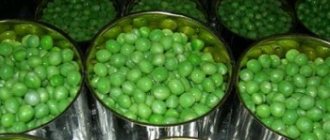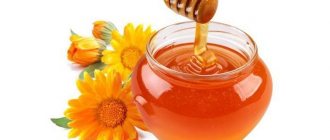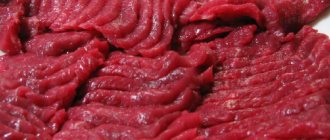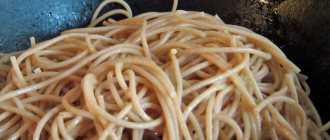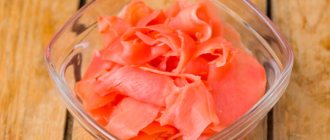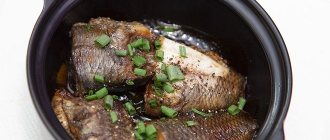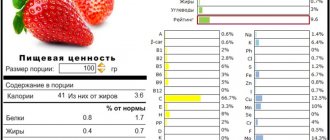Beetroot, or beetroot, is the second most popular vegetable, second only to potatoes. The sweetish root vegetable is used to prepare salads, first courses, drinks, snacks, winter preparations and even desserts. With proper storage and heat treatment, beets do not lose their beneficial properties. The vegetable has a beneficial effect on human health, primarily on the gastrointestinal tract.
- Beetroot appetizer with cheese
Compound
Raw, boiled and stewed beet practically does not differ in chemical composition. Experts have long proven that the product is useful in any form, because it is rich in natural substances vital for the normal functioning of all human organs and systems. The chemical composition of beets is presented in the table:
| Component Group | Compound |
| Vitamins | A, B₁, B₂, B₃, B₅, B₆, B₉, C, RR |
| Micro- and macroelements | Calcium, magnesium, potassium, iron, zinc, phosphorus, iodine, sulfur, copper, cobalt |
| Organic acids | Apple, lemon, oxalic |
| Amino acids | Histidine, arginine, lysine, valine, betaine, betanin |
| Organic sugars | Glucose, sucrose, fructose |
| Additionally | Antioxidants, pectins |
Beets contain a large amount of fiber, dietary fiber, protein compounds and complex carbohydrates that are beneficial for the body. The nutritional and energy value of beet depends on the variety and method of processing. Nutritionists usually indicate average BJU indicators, since the ratio of nutrients in fresh and thermally processed root vegetables varies slightly:
| The nutritional value | Indicators per 100 grams of product |
| Squirrels | 1.6-2.6 g |
| Fats | 0.1-0.2 g |
| Carbohydrates | 8.8-10.8 g |
| Calorie content | 40-49 kcal |
Calorie content of popular root vegetable dishes
The most popular beet dish is the famous beetroot soup.
It is consumed both hot and cold. The calorie content of beetroot, of course, is several times higher than the calorie content of beets, but it cannot be called a fatty dish either. The traditional first course also includes such products as meat, radishes, eggs, onions, the root vegetable itself and sour cream. Depending on the type of products used, the calorie content of beetroot will be different. The dietary dish will be made with kefir, with the addition of lean beef and low-percentage sour cream. The calorie content of cold beetroot is only 80 kilocalories per 100 grams. The hot dish, that is, borscht, is prepared according to a different recipe, with the addition of tomato paste and cabbage. Borscht will be dietary if you add beans instead of meat. Without sour cream, the calorie content of hot beetroot is 56 kilocalories per 100 grams.
The red vegetable is also often added to vegetable salads and stews. The root vegetable is usually used boiled. The calorie content of boiled beets is approximately 45 kilocalories. The most dietary dish using this product is vinaigrette.
The calorie content in vinaigrette with oil is low - approximately 92 kcal per 100 g, and a significant part, about 30-40 kcal, comes from vegetable oil. However, the benefits of vinaigrette with oil are undeniable - thanks to polyunsaturated fatty acids, fat-soluble vitamins A and E, which are strong antioxidants, are absorbed.
You can prepare many dietary dishes from low-calorie beets. Calorie content will vary depending on the fat content of other components and their quantity. An unseasoned vinaigrette contains approximately 120 kcal (per 100-gram serving). If we add vegetable oil to the salad, the calorie content will increase to 150.
Salad with carrots
Carrots are no less healthy than beets. It is added to salad boiled or raw. For a classic carrot-beet snack, the root vegetables are boiled, peeled and grated on a coarse grater. Add a little salt to the salad and let it brew. To let the juice flow.
Let's analyze the energy value:
| Quantity, gram | How many calories, kcal | |
| Salad | 100 | 42,1 |
| Squirrels | 1,5 | 6 |
| Fats | 0,1 | 0,9 |
| Carbohydrates | 8,9 | 35,6 |
The salad can be seasoned with fresh dill or parsley. Aromatic herbs will have virtually no effect on calorie content.
Beetroot with sour cream
Sour cream is richer and makes the salad more filling. Although boiled beets have so few calories that you don’t really need to worry about this.
Cooking process:
- Wash the root vegetable and boil until tender (400 g).
- Peel and grate on a coarse grater.
- Chop a clove of garlic. Better with a knife.
- Finely chop or grate a medium cucumber.
- Mix the ingredients and season with medium fat sour cream (25%).
Let's analyze the energy value of the dish:
| Quantity, gram | How many calories, kcal | |
| Salad | 100 | 68,1 |
| Squirrels | 2,2 | 8,8 |
| Fats | 3,5 | 31,5 |
| Carbohydrates | 6,9 | 27,6 |
With garlic and mayonnaise
Cooking process:
- Boil two small root vegetables and grate them on a coarse grater.
- Finely chop a clove of garlic.
- Mix the ingredients. Add salt to taste.
- Season with dietary mayonnaise.
Calorie content of beet salad with mayonnaise:
| Quantity, gram | How many calories, kcal | |
| Salad | 100 | 67,2 |
| Squirrels | 1,8 | 7,2 |
| Fats | 2,4 | 21,6 |
| Carbohydrates | 9,5 | 38 |
If you prepare dishes with boiled beets, you don’t have to worry too much about the calorie content. Due to its insignificance. Don't be afraid to include root vegetables in your daily menu. It is very good for health, and costs a penny.
Beneficial features
In ancient times, people used only beet leaves with petioles, the so-called tops, for food, and only over time they realized that the maximum benefit can be obtained from eating root vegetables. They learned to boil, stew and bake, and use them as a main or additional ingredient in various dishes.
The benefits of the vegetable can hardly be overestimated, because beet has a beneficial effect on the functioning of almost all internal organs and systems of a person:
- stimulates the body's defenses and increases resistance to viral and bacterial infections;
- improves the functioning of the heart and blood vessels;
- participates in the process of hematopoiesis - increases hemoglobin, prevents the development of anemia;
- normalizes metabolic processes;
- lowers blood pressure;
- treats runny nose;
- serves as a means of preventing benign and malignant neoplasms;
- facilitates the condition of patients during radiation and chemotherapy;
- accelerates the elimination of toxins, free radicals and other harmful substances;
- stimulates the secretion of gastric juice;
- improves the functioning of the digestive system;
- prevents the development of atherosclerosis;
- enhances libido and increases potency in men;
- improves the general well-being of women during menstruation;
- has a mild laxative effect and helps with constipation;
- relieves inflammation on the skin and mucous membranes of internal organs;
- promotes cell rejuvenation and prevents premature aging.
As you can see, the range of beneficial properties of beets is quite large. Doctors recommend eating it for everyone - men and women, children and the elderly. Beetroot is especially useful for those who have problems with the digestive tract:
- for gastritis, boiled root vegetables relieve inflammation of the gastric mucosa and normalize its functioning;
- for problems with the liver, pancreas and intestines, it helps cleanse organs and restore their cells;
- for chronic and spastic constipation, it facilitates the process of defecation and accelerates the removal of feces.
If you have pancreatitis, you should absolutely not eat raw beets . But when boiled, the vegetable will benefit the body, only its daily dose should not exceed 100 g.
Features of eating beets by pregnant women
Gynecologists recommend that pregnant women include a small portion of beets in their daily menu. Folic acid, contained in the pulp of the root vegetable, helps form a healthy nervous system for the baby. A universal low-calorie vegetable generally has a beneficial effect on the body of expectant mothers:
- effectively cleanses the intestines of putrefactive bacteria and feces, prevents the development of constipation;
- has a mild diuretic effect;
- lifts your mood and helps fight depression;
- increases the level of hemoglobin in the blood and prevents the development of hypoxia in the fetus.
During pregnancy, when almost all medications are contraindicated, beet juice is used in the complex treatment of sore throat, pharyngitis, laryngitis and rhinitis. To cure a runny nose, you need to instill 3-4 drops of undiluted freshly squeezed juice into each nostril several times a day. Regular gargling with a solution made from 1 part beetroot juice and 2 parts warm boiled water will help relieve a sore throat.
Benefits for children
Pediatricians recommend introducing beets into the menu of infants from 8 months of age. This vegetable practically does not cause allergies in children, but it improves intestinal motility, stimulates the growth of beneficial microflora, and prevents dysbiosis and constipation. Regular consumption of beets saturates the body with beneficial vitamins and microelements, improves the metabolism of fats and proteins and has a beneficial effect on the growing body.
Beetroot should be introduced into the children's diet gradually, starting with 0.5-1 tsp. in a day. The optimal time for complementary feeding is breakfast, so that during the day parents can assess the body's reaction to the new product. If there are no signs of allergy or intolerance to beets (abdominal pain, loose stools), the daily amount of beets can be increased to 4-5 tsp. puree a day.
Starting from one year old, children can already be given various dishes with beet:
- beetroot soup or borscht without frying;
- vinaigrette and other salads;
- vegetable stews;
- stewed or baked beets;
- casseroles;
- pancakes.
The daily amount of beets for children under 3 years of age should not exceed 50 g; for children from 4 to 7 years old, the daily amount can be increased to 100 g.
Beetroot for weight loss
Supporters of a healthy lifestyle and proper nutrition must include beets in their diet. Thanks to its large amount of useful substances, it helps prevent vitamin and mineral deficiency in the body, which usually occurs when following various diets. In addition, regular consumption of vegetables helps restore normal metabolism and reduce weight.
Experts classify beetroot as a group of dietary products that promote weight loss. It is enough to eat several servings of beets a week to normalize the functioning of the gastrointestinal tract and activate metabolic processes.
Root vegetables belong to a small category of foods that are allowed to be eaten even at night.
Fasting days
When losing weight, the root vegetable is often used for fasting days. It is useful to arrange them no more than 1-2 times a week. Throughout the day, you are allowed to eat boiled beets (as a separate dish or in combination with olive oil) and drink beet juice.
The second menu option for a fasting day is beets with kefir. During the day, you are allowed to drink a fat-burning cocktail made from 1 kg of boiled root vegetables and 1.5 liters of kefir. All ingredients are mixed with a blender, then the total volume of the cocktail is divided into 6 servings, which are drunk every 2-3 hours throughout the day.
Beetroot diet
Those who want to lose weight often use a beetroot mono-diet, designed for 7 days. The menu may only include dishes made from beets in combination with some low-calorie foods:
- beet and carrot soup;
- dietary salad of raw or boiled root vegetables with the addition of garlic, herbs, a spoon of olive oil, mayonnaise or sour cream with a low fat content;
- baked, boiled or stewed beet;
- beet juice (for breakfast and dinner) - pure or diluted with clean water, as well as in combination with carrot, cucumber or celery juice.
Nutritionists do not recommend drinking freshly squeezed beet juice, as it can provoke an attack of vomiting or vasospasm. It must first be left in the refrigerator for several hours and only then drunk.
So if beet juice is planned for breakfast, you will have to prepare it the day before and squeeze out a portion for dinner in the morning.
During the day you can eat as many beets as you want. It gives you a feeling of fullness and allows you not to feel hungry for a long time, so this mono-diet is quite easy to tolerate. However, exceeding the maximum daily limit (2 kg of vegetables) is not recommended.
The entire amount of food calculated for the day must be divided into several meals. It is best to eat small portions every 2 hours, but if this is not possible, you need to provide at least 4 meals a day.
During fasting days and the beetroot mono-diet, those losing weight are allowed to drink pure water and green tea without sugar in unlimited quantities. But alcohol and carbonated drinks should be completely excluded, as they not only contain a lot of extra calories, but also completely neutralize the beneficial effect of vegetables on the body.
The beetroot diet allows you to lose 3-5 kg in a week. Having achieved positive results, you cannot continue to eat this way and increase the duration of the diet. Otherwise, a monotonous diet, instead of the expected benefit, will cause harm. In addition, keeping your body in shape using mono-diet is allowed no more than once every 3 months.
Properties of boiled beets
Nutritional value and composition | Vitamins | Minerals
How much does boiled beets cost (average price per 1 kg)?
Moscow and Moscow region.
30 rub.
The vast majority of modern beet varieties date back to the times of ancient civilizations, when the plant was first used as food. It is noteworthy that India and the Far Eastern region are considered to be the birthplace of wild varieties of beets, which were subsequently cultivated by humans. Initially, beets were considered a medicinal plant, which was actively used by the inhabitants of Ancient Babylon, as well as the Mediterranean.
It is also interesting that in those distant times, only beet tops were eaten, and the root vegetable was used for medicinal purposes. Historians have found written evidence that beets were considered an incredibly valuable vegetable in the life of the ancient Greeks. It turns out that the Greeks considered beets a imported vegetable and sacrificed the root crop to the powerful god Apollo. Beetroot came to the territory of Kievan Rus only in the 10th century.
However, after some time, the vegetable began to enjoy unprecedented popularity. It is worth noting that beets appeared on the territory of European countries even later in the 13th century. True, already in the 14th century, beets began to be cultivated on an industrial scale in Europe. It is also noteworthy that beets are used not only as a vegetable. This plant is processed and the well-known sugar is obtained. The first to work on the selection of a new type of sugar beet was the German luminary of chemistry Andreas Marggraff in 1747. The scientist noted that beets, like sugar cane, contain sugar.
Conventional varieties of beets did not produce the required amount of sugar compound, so the researcher came up with the idea of a new sugar type of beet. Both fresh vegetables and boiled beets are used in cooking. Due to its low calorie content, boiled beets are considered a dietary food. It is precisely because of its low calorie content that boiled beets are included in many diets. However, it is not only the low calorie content of boiled beets that deserves attention.
Contraindications and side effects
Beets have a number of contraindications. It is prohibited to eat raw or heat-treated vegetables if you have the following pathologies:
- acute stage of gastritis;
- increased stomach acidity;
- urolithiasis disease;
- osteoporosis;
- tendency to diarrhea and stomach upsets.
You should not get carried away with beets if you have diabetes, since the root vegetable contains a certain amount of organic sugars: the daily serving of vegetables should be no more than 70 g raw and 140 g boiled.
Like any other product, beet will be useful only within reasonable limits. Abuse of raw or boiled vegetables can cause diarrhea and exacerbation of the chronic diseases listed above.
Don't be alarmed if you see red urine when you urinate. The reason for this coloring is anthocyanins - special pigments of organic origin contained in beet pulp. If your overall health is normal, then there is no reason to worry: anthocyanins are quickly eliminated from the body and urine returns to its previous color. But when the pink tint of urine lasts for several days after drinking beet juice or eating beetroot, there is a good reason to see a doctor.
How many calories are in beets
As we can see, beets are very useful. But we know that beets are a very sweet product, the main source of calories in beets are simple carbohydrates, which are easily and quickly absorbed by the body. How many calories are in beets and can beets be used for weight loss?
The calorie content of beets is 40-42 kcal per 100 g. 100 grams of beets contain about 9 grams of carbohydrates, 1.5 grams of proteins and only about 0.1 grams of fat. The calorie content of boiled beets is about 49 kcal per 100 g. It contains no fat at all, and carbohydrates - about 11%. The calorie content of boiled beets differs from the calorie content of raw beets, because high temperatures change the properties and composition of the substances contained in beets. Boiled beets contain fewer nutrients than raw ones, but they are better absorbed by the body, so you should not be alarmed by the fact that the caloric content of boiled beets is slightly higher than the caloric content of raw beets. With the calorie content of boiled beets being 49 kcal per 100 grams, you can eat a substantial portion of a salad of grated boiled beets, apples and raisins for 100 kcal, and 100 grams of boiled beets will be an excellent side dish for any meat.
Knowing how many calories are in beets, we can conclude that beets are a valuable dietary product, so using beets for weight loss is more than logical.
Methods for preparing beets
The traditional method of heat treatment of beets is boiling in water. This process is so simple that even a novice cook can handle it. However, preparing boiled beets has its own nuances:
- Wash the beets thoroughly, remove any adhering dirt or soil with a kitchen sponge or a hard rag;
- boil vegetables in their skins and with the tails remaining after cutting the tops;
- Place the root vegetables in a saucepan and add water so that it is 2-3 cm higher than the vegetables;
- after boiling, reduce heat and add 1 tbsp. l. freshly squeezed lemon juice;
- cook for 35-50 minutes depending on the type and size of the beet;
- readiness to check with a fork;
- If the beets are ready and a fork fits freely into the pulp, drain the hot water and pour cold water over the vegetables;
- leave in this form for 10 minutes, then drain the liquid, dry the vegetables and begin peeling them.
It’s even easier to bake beets in the oven: just wash them, wrap them in food foil, place them in an oven heated to 180°C and bake for 30-45 minutes. After this method of cooking, you do not need to clean the pan, as you have to do after each boiling of vegetables.
Boiled beets go well with other products:
- soft cheeses;
- veal;
- fish;
- walnuts;
- prunes;
- raisins;
- fresh or baked apples;
- green salad and any greens;
- celery;
- seaweed;
- canned peas, beans and corn;
- garlic;
- olive oil;
- mayonnaise;
- sour cream;
- balsamic vinegar;
- vegetables - potatoes and carrots.
There are a lot of recipes with beets, so the listed products in various combinations allow you to prepare many delicious salads, appetizers and first courses.
Boiled beets benefit. Boiled beets
Perhaps the most common vegetable for preparing your favorite dishes, after potatoes, is beets. Unpretentious to grow, not losing vitamins and minerals throughout the entire storage period, tasty and bright, beets are deservedly considered the queen of Russian cuisine (calorizator). They began to boil beets a long time ago, although initially only fresh leaves of the plant were eaten, and the root vegetables were considered inedible. Boiled beets are easy to prepare, they can be stored in the refrigerator for several days (unpeeled beets are stored for 7-10 days) and used as needed.
Calorie content of boiled beets
The calorie content of boiled beets is 49 kcal per 100 grams of product.
Composition and beneficial properties of boiled beets
Boiled beets retain most of the beneficial substances, contain: choline, vitamins A, B1, B5, B6, C, E, H and PP, as well as minerals necessary for the human body: potassium, calcium, magnesium, zinc, iron, iodine, phosphorus and sodium, folic acid and a sufficient amount of fiber are present in the vegetable. Based on the chemical composition, it becomes clear that boiled beets are useful for almost everyone. The product is one of the natural effective laxatives, in combination with vegetable oils it can cure the most severe constipation. Boiled beets take part in hematopoiesis, replenishing blood loss, which is especially important for women with heavy menstruation. Boiled beets are also useful for men - it has been proven that they increase libido and increase male strength.
The presence of organic acids in boiled beets (tartaric, lactic, malic, oxalic and citric) plays an important role in the process of food digestion. The substance betaine helps lower blood pressure, participates in lipid metabolism, and reduces the number of cholesterol plaques on the walls of blood vessels. The property of boiled beets to remove heavy metal salts from the body is known.
Harm of boiled beets
Despite the obvious benefits of the product, boiled beets are not recommended for diabetics due to the high content of natural sugars, people with “weak” intestines and a tendency to stomach upsets, as well as those with urolithiasis.
Boiled beets for weight loss
If in the summer it is more logical to lose weight on fresh vegetables and fruits, then in the autumn-winter period boiled beets are an ideal solution for those who want to get rid of extra pounds. Whether it will be a beetroot mono-diet, a fasting day on beets, or a dinner consisting of boiled beets several times a week, everyone decides for themselves, but the benefits are obvious in any case.
How to cook beets
Cooking beets is quite simple, you need to thoroughly wash the root crop without cutting off the root and lower part of the tops (of course, we are talking about fresh beets, if they have been stored for a long time, there is no need to talk about any leaves, but what is left of them does not need to be removed ). This is done to maximize the juiciness of the product. Place the prepared beets in a saucepan, add cold water, bring to a boil and cook over medium heat for 45-70 minutes, depending on the size of the root vegetables. Drain the water and pour cold water over the beets, which should be drained after a minute (this will make the beets easier to clean). Even more beneficial properties will be preserved if you bake the beets - wrap the clean root vegetable in foil and cook in an oven preheated to 180 °C for 30-45 minutes.
Boiled beets in cooking
Boiled beets are the basis for preparing many dishes - vinaigrette, various salads, beet soup, cold borscht, appetizers, pate and beet caviar - this is not a complete list of dishes that can be quickly prepared with boiled beets on hand. The simplest option is beets, olive oil, freshly ground pepper and sea salt - an ideal dietary salad for lunch or dinner.
You can learn more about boiled beets, their types, benefits and harms from Copying this article in whole or in part is prohibited.
